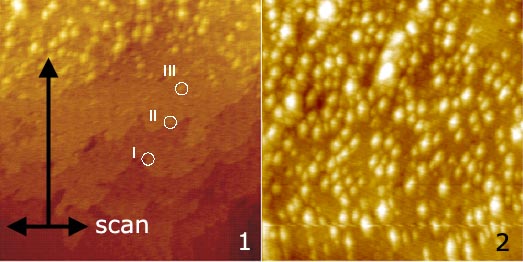STMBE
I have a long-standing collaboration with Prof. Shiro Tsukamoto, formerly of the National Institute for Materials Science in Tsukuba and the University of Tokyo, and now at Anan National College of Technology Materials Engineering Lab. Some idea of the topics we have covered can be gained from this list of international conference presentations over the years and include:
- GaAs and InAs molecular beam epitaxy and surface reconstructions
- Surface passivation of GaAs and InAs with sulfur
- InAs quantum dot growth on GaAs
- Novel organopalladium catalysts for pharmaceutical reactions
My collaborative work with Prof. Tsukamoto mainly involves the use of a unique STM system in which the microscope is fully integrated with a III-V MBE system. It is capable of scanning with atomic resolution during the growth of GaAs and InAs - this is a nearly unique capability. Most recently we have used the STMBE to identify "Surface Reconstruction Territories" (SRTs) on InAs-GaAs(001). The SRTs are impossible to distinguish by conventional diffraction or STM. Remarkably, their spatial distribution controls the (non-random) spatial distribution of InAs quantum dots on GaAs.
We published a paper in the journal 'Small' following for the first time how InAs quantum dots form on a GaAs substrate. The spontaneous ('self-organised') formation of quantum dots is not fully understood and was a central topic of the first of a series of international scientific workshops initiated by me and Dr. Giovanni Costantini in Chemistry.

The image shows two sequential STM scans of InAs QDs growing on the GaAs substrate. At the bottom of the left image, the terraces (separated by a single atomic step height) of the substrate can be seen. The tip scans left-to-right and moves upwards to form the image, and hence the vertical direction is also a time scale: each image takes 200s to acquire. Very suddenly, bright features appear in the left image near the top - these are InAs islands only a few nanometres in size. In the second image, almost the entire surface is covered in such islands. Their formation is extremely rapid, occuring over a coverage interval of a tiny fraction of an atomic layer. This ultra-fast development can only be accounted for by a large coverage of free In adatoms available for 3D island formation. This is consistent with the rapidly shifitng SRTs identified by STMBE and the In atoms are incorporated in the mixed reconstruction.
